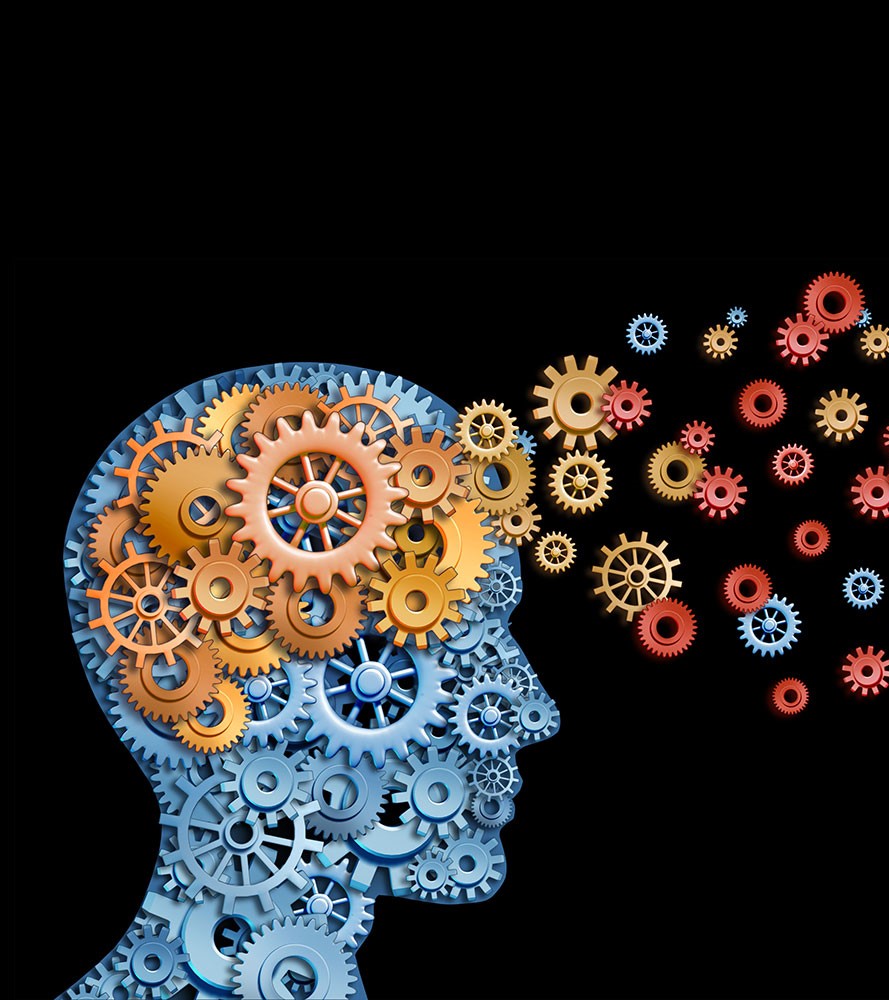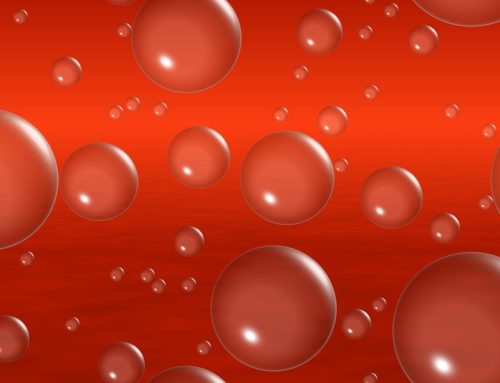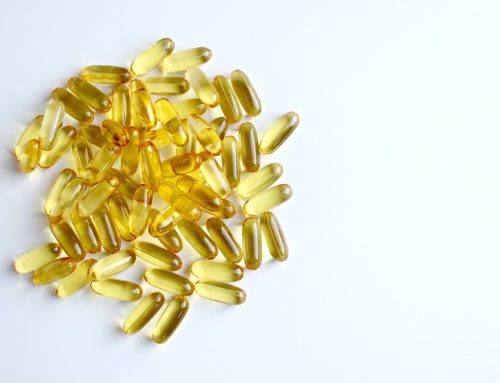Omegas (omega 3, omega 6) and vitamin E for a well-functioning brain: against depression, Alzheimer’s, adhd…

Brain cells consist of 60% fat. The cerebral cortex even consists of 80% fat. DHA (omega-3) is or should be most present in the brain together with Arachidonic acid (omega 6).
Omega 3 and omega 6 fatty acids have a ratio of about 1/1 in the brain, according to Udo Erasmus. Dharma Singh Khalsa wrote in her book Vital Thinking: ‘I began to realize that elements such as stress and diet were critical to the prevention of degenerative diseases. Stress and nutritional deficiencies are toxic to the brain’.
Remembering, learning and concentrating happen in the brain through a process of communication between the several millions of brain cells. The brain messengers, called neurotransmitters, are stored in the tiny vesicles at the ends of the brain cells. They are called synaptic vesicles and are the communication centers of the brain cells. The more synaptic vesicles filled with neurotransmitters, the better our brains work. ‘The more synapses, the easier the communication between the brain cells and the better the brain function. The more omega 3 (DHA), the more easily dendrites form with synapses and receptors,” said Dr. J. Hibbeln of the National Institutes of Health in Maryland.
Yoshida, Yasuda, and Okuyama confirmed this in their study published in 1997 in “Journal of Neurochemistry.” They showed that the learning capacity of rats decreased because they did not receive enough omega 3 and therefore had fewer synaptic vesicles. These rats scored significantly lower in tests compared to the control group.
Sufficient omega 3 and omega 6 important for a well-functioning brain
DHA (an extended chain of alpha-linolenic acid) and AA (the extended chain of linoleic acid) are concentrated in the thinking center of the brain (the cerebral cortex), but also in the nucleus and in the mitochondria (energy factories) of the brain and in the cell walls of the synaptic vesicles. Supple cell walls, for which sufficient omega 3 and omega 6 are required, promote communication between the brain cells. If a neurotransmitter does not fit easily into the receptor, the transmission of information fails. If the membrane is liquid, provided by omega 3 and 6, the receptor can easily change shape and grab the neurotransmitter. If the membrane is stiff, it is difficult for the receptor to change shape and grab the neurotransmitter. Difficult or no communication takes place at that time.
‘Omega 6 (arachidonic acid) also contributes to brain function and is essential for the brain development of infants’ (56). After DHA, AA (arachidonic acid, the extended chain of linoleic acid, omega 6) is the fatty acid most abundant in the brain. That is why a sufficient supply of linoleic acid is also essential for the brain. Ann Gittleman writes: ‘AA (omega 6) must be present in sufficient quantity for a healthy brain and for the smooth functioning of synaptic connections’. (58)
‘To keep your brain working in top condition, you need a subtle balance between omega 3 and omega 6. It determines the structure and activity of your brain’, (57) says Jean Carper, assisted by Ann Gittleman (58). The brain cells are therefore particularly sensitive to oxidation (going rancid or aging) and crave vitamin E and carotenes.
Vitamin E protects the brain against the test of time
Brains are particularly sensitive to oxidation. One of the reasons why brain cells in particular are damaged and eventually destroyed is the inferiority or ‘rancidity’ of its fats. Each brain cell consists of 60% fat and mainly omega 3 and omega 6. In the course of aging, parts of the brain will, in a sense, become rancid due to oxidation, literally ‘spoiling’ large areas of the brain. Rancid fats are caused by free radicals.
‘Without vitamin E, the fatty parts of the brain are more likely to go rancid, causing major disruptions in the normal functioning of your brain. There is only one antioxidant, vitamin E, which resides in the fatty part of the cell membranes of the brain cells and can thus constantly fight free radicals on its own ground. Sections show that a vitamin E deficiency leads to a degeneration of nerve cell axons and to shrinkage of the cerebellum (small brain). Vitamin E’s greatest strength is believed to be its antioxidant capacity to protect fat in cell membranes from fat peroxidation, another word for rancidity, caused by free radicals. Damaged or rancid membranes of the brain cells transmit confused messages, manifested in amnesia and other intellectual deficits.’ According to Jean Carper in his book ‘Nutrition and intelligence’.
A study conducted by the French government (INSERM) found that men and women with the most carotenes in their blood were the most intelligent. The smartest had 35 to 40% more carotenes than the dumbest. Carotenes are antioxidants and, like vitamin E, protect the cell walls.
Omega 3 and omega 6 in postpartum depression
A Korean study showed that both omega 6 (AA) and omega 3 (DHA) levels decrease in pregnant women (100). Emotional weakness after childbirth is often the result of too little omega 3 fatty acids. During the last three months of pregnancy, the fetus’s brain grows rapidly. They increase in volume three times and absorb omega 3 from the mother. If the mother has a lack of omega 3 rich food, this means for the baby a delay in the development of the brain and excessive crying spells. For the mother, the omega 3 deficiency results in depression after pregnancy. A 1991 study by Holman, Johnson, and Ogburn showed that postpartum women have 50% lower omega-3 levels. That is why cod liver oil was given in the past. (59)
Omega 3 and omega 6 in depression
Supplementing flaxseed oil was able to improve mood in the mentally ill within 2 hours, and three days after taking 6 tablespoons per day, patients experienced a distinct sense of increased physical energy and a unique exuberance. The majority of depressed patients slept better after eight weeks, had more energy, and felt less anxious and depressed. (60) Omega 3 alleviated the symptoms of manic-depressive illness in a group of 30 patients. The patients who did not receive omega 3 were four times more likely to have a new episode of manic depression than the patients who did receive omega 3. (61)
‘The higher the serotonin (feel good hormone) in your brain, the happier you feel. The more omega 3 (DHA) the more serotonin,” said Dr. hump. hump.
Omega 3 and omega 6 in ADHD and hyperkinesia
ADHD and hyperkinetic patients are impulsive. They have difficulty concentrating, tend to have tantrums, have difficulty falling asleep and have sleep disturbances. They must always be reminded to remain calm and to think before taking any action. It is becoming more and more clear that extra omega 3 and omega 6 together with a wholesome, healthy diet and the radical reduction of refined sugar offers the solution in many cases. Brains that have omega 3 and 6 and other deficiencies function poorly, which is reflected in their behavior and performance.
Mitchell E. and Al. examined the clinical characteristics and the level of omega-3/6 in the blood of hyperactive children. They found significantly low omega-3/6 levels in children with ADHD symptoms. (62) Stevens L. showed that children with behavioral and learning disabilities had lower levels of omega 3 than children who had no problems. (63) Richardson A. concluded that deficiency in omega 3 (DHA/EPA) and omega 6 leads to behavioral and learning disabilities. (64)
Not all children with ADHD have deficiencies in omega 3 and omega 6, but the vast majority do. In addition, scientists increasingly assume that nutritional deficiencies can not only cause physical diseases, but also have a huge impact on brain, behavior, memory, IQ, etc. dr. Ibarren showed that the administration of omega 3 reduces hostility, cynicism, mistrust, fear and aggression. (65)
Omega 3 in dyslexia
dr. Richardson from Oxford found that 9 out of 12 adults with dyslexia studied had abnormal fatty acid metabolism in the brain. They have trouble making omega 3 fatty acids. Jean Carper therefore advises in his book ‘Nutrition and intelligence’ that dyslexia patients should take more omega-3 supplements.
Omega 3 in aggression and studying
Omega 3 (DHA) suppresses student aggression during times of mental stress. According to a survey of 41 Japanese students (66). (1) Tomohito Hamazaki of Toyama Medical and Pharmaceutical University.
Omega 3 and vitamin E in Alzheimer’s
Alzheimer’s patients received a combination of omega 3 and omega 6 in a ratio of 1 to 4. Short-term memory improved in 74%. In addition, they worked more, were better organized and had a better mood. They had more appetite, less sleep disturbances and hallucinations. During the day they were more alert. (67)
The intake of omega 3 fatty acids would reduce the risk of Alzheimer’s by 60%. (68) ‘Who chooses food that is rich in vitamin E, reduces the risk of Alzheimer’s by 67%. Vitamin E supplements did not do this, unlike natural vitamin E from food. Also, vitamin C and beta-carotene were less effective than their natural dietary sources. But those who took 10mg of natural vitamin E per day through food were 67% less likely to develop Alzheimer’s compared to those who only took 5mg through food. (69)
A recent study found that taking vitamin E ‘alpha-tocopherol’ helped more in slowing dementia than a new drug in treating Alzheimer’s disease. (70)
Omega 3 and Omega 6 in schizophrenia
The blood of schizophrenics contains only half as much omega 3 (DHA) and omega 6. They have only a quarter of arachidonic acid (omega 6) in their red blood cells (71). ‘EPA (omega 3) has little structural presence in the brain, but lack of EPA can cause mental disorders’ (eg schizophrenia) says Dr. hubbeln.









